ONE OBJECT
Our Army, Our Protectors
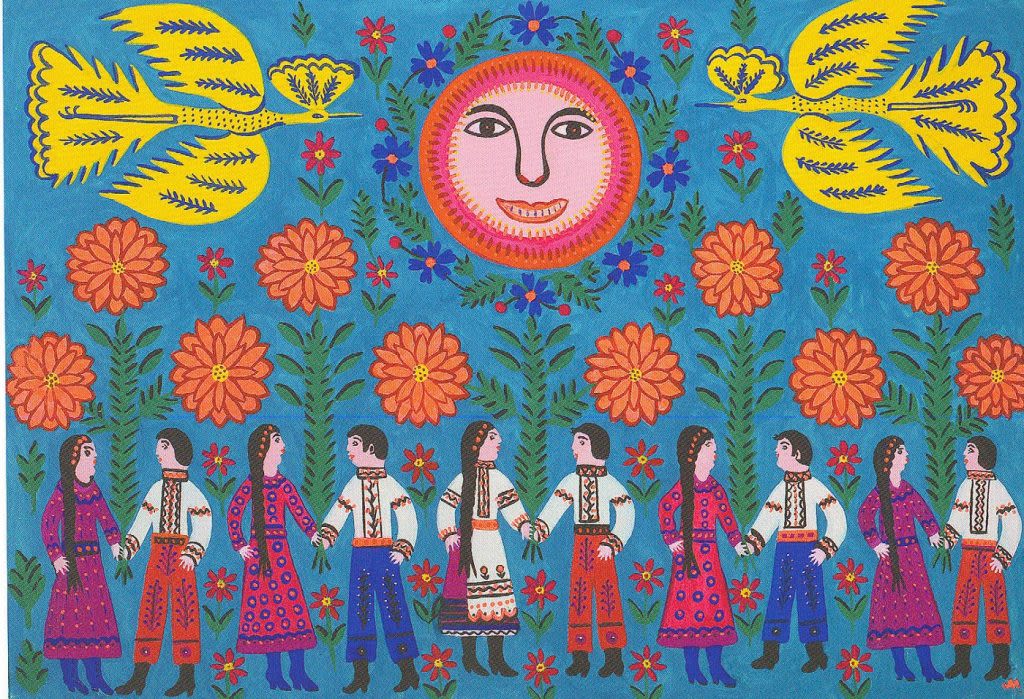
Maria Prymachenko lived and painted in the village of Bolotnya in the Ukraine.
Her style instantly recognizable, with vivid, bold color, heavy outlines, and a decorative rhythm that beats through the large natural settings.
The painting, Our Army, Our Protectors features a variety of plants and two enormous birds prepare to meet before the smiling sun.
Couples in traditional Ukrainian folk costumes face each other with hands held
Prymachenko was recognized for bringing folk-art style to the fine art world in the early 20th century. Her simple, vivid, and energetic paintings create layers—sunny optimism, rooted tradition, and a mysterious nostalgia for something lost.
There is no sense of 3-d modeling or perspective here—Prymachenko fuses Ukrainian folk traditions of embroidery, painted ceramics, and the unique Ukrainian tradition of Pysanky, or batik-painted Easter eggs.
Prymachenko’s connection to her homeland is everywhere.
The traditionally dressed couples stand ready for their cue to begin the Hopak, the traditional folk dance of Ukraine.
The cheerful flowers bear symbolism that speaks directly to the artist’s Ukranian countrymen and women:
The orange marigold is the unofficial flower of Ukraine.
The marigold is often worn in women’s hair and flower crowns. This flower is a symbol of passion and creativity.
The purple periwinkle, with its gritty toughness through heat and freezing cold, this flower is a symbol of eternity.
The bright red poppy, with fragile petals, symbolizes the transience of youth and beauty.
The birds are feathered in the colors of the Ukranian flag.
Birds carry special significance in Ukraine--birds were anciently recognized the sun god's chosen creations, for they were the only creatures who could get near him.
In Our Army, Our Protectors, the birds fly triumphantly and beautifully in sync.
As a child, Maria Prymachenko delighted painting the natural world.
"Once, as a young girl, I was tending a gaggle of geese. When I got with them to a sandy beach, on the bank of the river, after crossing a field dotted with wild flowers, I began to draw real and imaginary flowers with a stick on the sand… Later, I decided to paint the walls of my house using natural pigments. After that I’ve never stopped drawing and painting."
Maria Prymachenko’s reputation grew through the 1960s, as exhibitions featuring her work traveled through Eastern Europe.
Her flat, boldly colored, dream-like scenes were met with global acclaim, as avant-garde artists saw refreshing possibilities in her untrained approach. After seeing Prymachenko’s work , Pablo Picasso exclaimed,
"I bow down before the artistic miracle of this brilliant Ukrainian

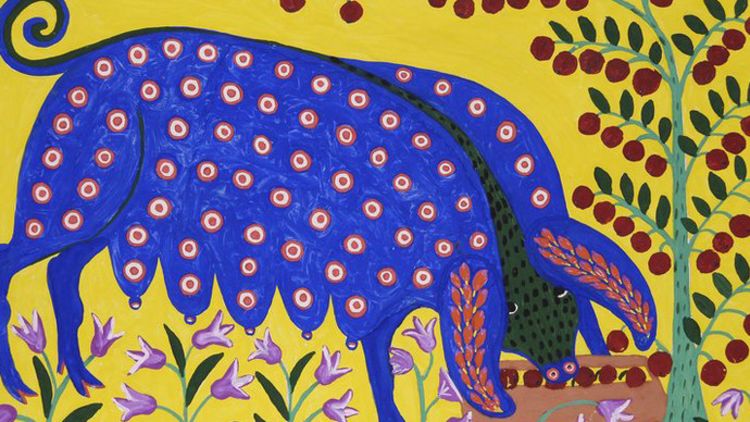
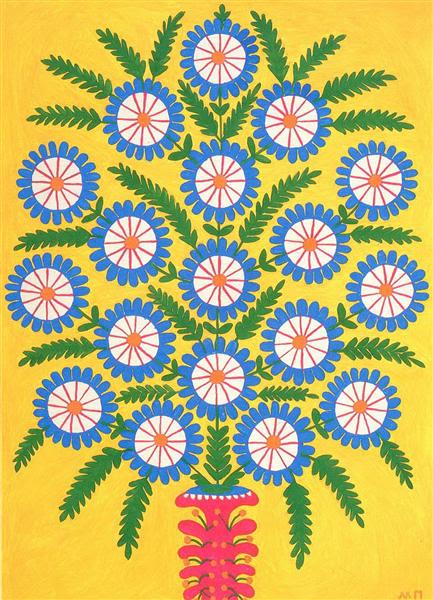
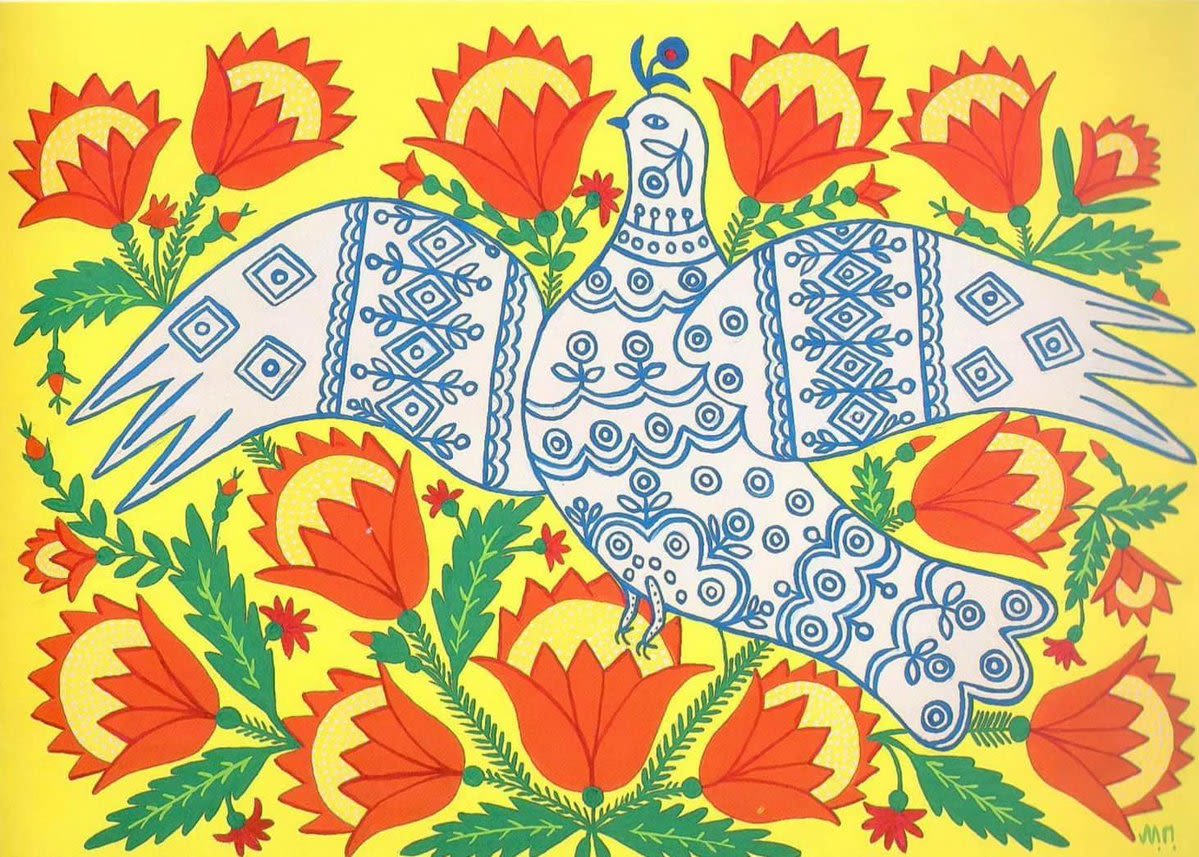

Maria Prymachenko: Pretty Pig, 1965
Maria Prymachenko: Pretty Pig, 1965

Maria Prymachenko, I Give My Little Stars to Children, 1983
Maria Prymachenko, I Give My Little Stars to Children, 1983

A Dove Has Spread Her Wings and Asks for Peace, 1982
A Dove Has Spread Her Wings and Asks for Peace, 1982
Today, we learn that Russian invaders have bombed the Ukranian History Museum, destroying the largest single collection of Prymachenko’s paintings. No words for this.
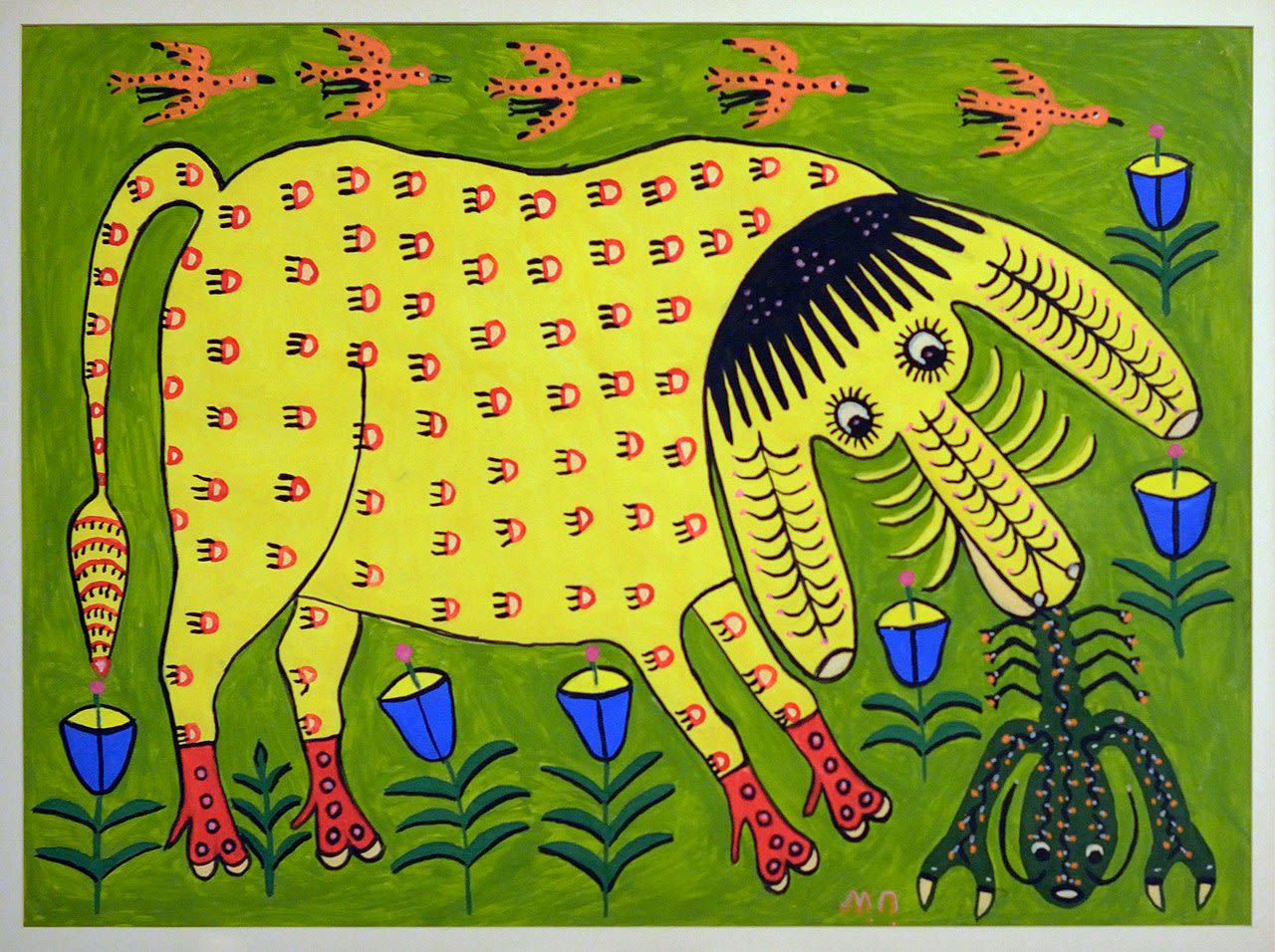
Maria Prymachenko. Eared beast grasped a Crustacean. 1983
Maria Prymachenko. Eared beast grasped a Crustacean. 1983
Here's a helpful page to help us all know where to donate and support Ukraine:
